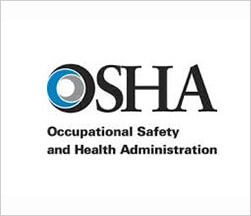MOBERLY, Mo. – UPDATE***- An investigation is underway after a St. Louis man died of carbon monoxide poisoning from exposure at an airport in Moberly.
Three men were hospitalized Feb. 5 after being exposed to carbon monoxide at Omar Bradley Airport, according to police. They were all taken to the hospital along with a Moberly firefighter who also suffered carbon monoxide exposure.
The Randolph County coroner confirmed Wednesday morning that Arron J. Herring, 29, of St. Louis, died at a hospital in Columbia on Saturday of carbon monoxide poisoning.
All others effected by carbon monoxide exposure have been released from the hospital.
Moberly Community Development Director Tom Sanders said two of the men exposed to carbon monoxide were aircraft mechanics out of the St. Louis area. The men were independently hired to repair a private aircraft inside a hangar. The third person exposed to carbon monoxide entered the hangar at a later time, saw the other two men affected and called 911.
The Omar Bradley Airport is publicly-owned but has several privately owned hangars. Sanders said the hangar where the incident happened is leased to CMAE LLC.
“The lease was initiated in 2015, and the hangar was constructed at that time,” Sanders said.
He said the hangar holds multiple privately owned planes.
Investigators said the source of the carbon monoxide was a malfunctioning heater.
The Occupational Safety and Health Administration is investigating to confirm all standards and regulations were followed. An OSHA spokesperson said witnesses are currently being interviewed. By law, OSHA has six months to complete the investigation.
MOBERLY, Mo. – UPDATE**- The Randolph County Coroner confirmed Wednesday morning that a man who was exposed to carbon monoxide at the airport in Moberly has died.
Coroner Don Barrett said his office was informed that Arron J. Herring, 29, of St. Louis, died at a hospital in Columbia on Saturday.
According to Barrett, the cause of death has been ruled as carbon monoxide poisoning.
Two other men found unresponsive inside a hangar at Omar R. Bradley Regional Airport were treated and released from the hospital. A Moberly firefighter was also released after being treated for carbon monoxide exposure.
Investigators said last week the source of the carbon monoxide was a malfunctioning heater.
The Occupational Safety and Health Administration is investigating the incident.
MOBERLY, Mo. -TRAGIC NEWS OUT OF MOBERLY- Three aviation mechanics were rushed to a hospital after they were overcome with carbon monoxide poisoning at a hangar at the Omar Bradley Regional Airport in Moberly, Mo Tuesday. Moberly Police Chief Troy Link said an initial investigation determined the carbon monoxide came from the hanger’s heater.
“We determined what we believe was the source of that carbon monoxide and it was a heater inside the structure itself,” said Link.
He said it was too soon in the investigation to determine why the heater malfunctioned. Link said two of the victims were alive but unresponsive when they were transported to the hospital and a third victim was conscious and talking to first responders but passed out soon after they arrived. The two more serious patients were from the St. Louis-area, according to the police chief.
The three men were identified as 29-year-old Arron James Herring of St. Louis, 27-year-old Matthew Gregory Trani II of St. Charles, and 25-year-old Wren Allen Johannaber of Huntsville.
Link said it’s believed a 29-year-old is from St. Louis and a 27-year-old is from St. Charles.
Carbon Monoxide can be deadly in an enclosed area. Andy Stecko is a firefighter and paramedic with Central County Fire. He says the best ways to stay safe are first making sure you’re the heating source is working properly and then secondly to install working carbon monoxide detectors.
He said even in a space the size of an airport hangar or a firehouse bay there could be problems. He pointed to the heating system inside the engine house three in St. Peters.
“If one of those vents would be clogged by snow, if they would fail, if they would rust in an area and would be putting those gases, they would be CO into the engine bay here,” said Stecko.
He said it doesn’t matter which room you install a carbon monoxide detector. The important thing is that you can hear the detector no matter where you are in the house. He said in some cases that means installing detectors in several rooms.

















